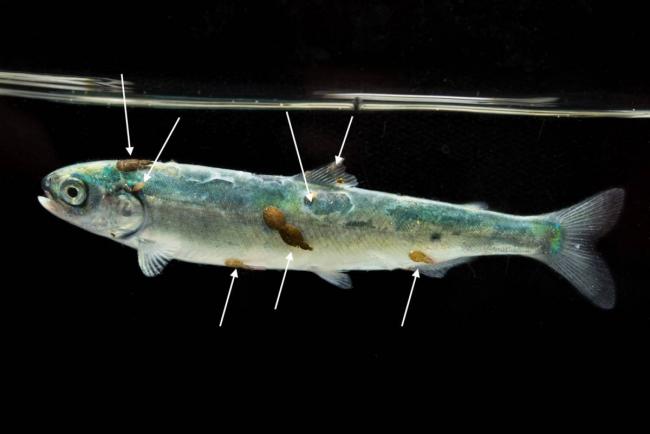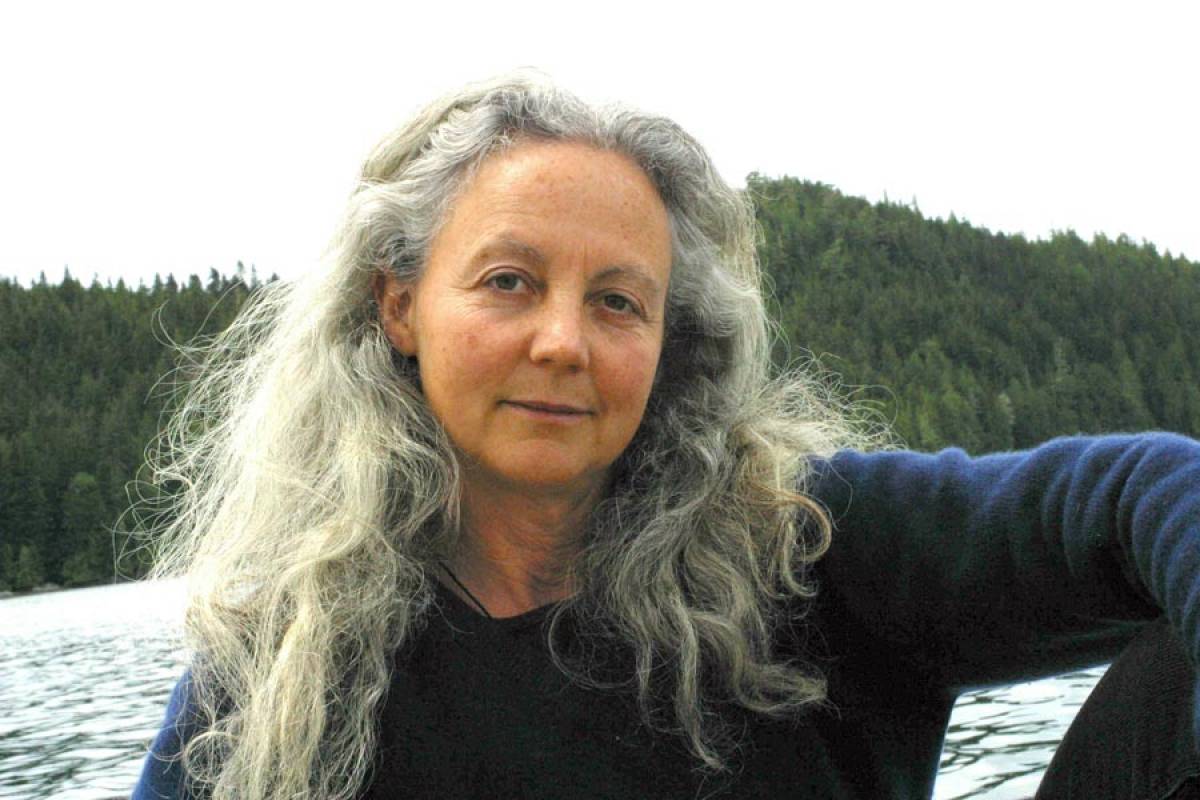Articles Menu

Fisheries Minister Bernadette Jordan, MP for South Shore—St. Margarets, Nova Scotia, will make a decision within the next week that will decide the fate of the Fraser River sockeye salmon.
In 1997, one of Canada’s most prominent scientists, Jeff Hutchings of Dalhousie University, was the lead author in a paper that described the DFO decisions that led to the collapse of the North Atlantic cod.
There was no examination, inquiry or accountability. The late Dr Ransom Myers said it was simple: DFO was issuing quotas to capture cod before they were old enough to have spawned. Like eating into your investment capital Canadians were left with an empty ocean.
Standing in my speedboat in the Broughton Archipelago Myers told me what it was like to be the scientist that could have prevented the collapse: "When DFO told me not to tell the public why the cod were collapsing, it took me seven minutes to decide to resign. DFO is a criminal organization.”
Myers went on to a brilliant career as a fisheries scientist. Shortly after the last cod boat was tied up forever, the Hibernia Oil Wells went onto the Grand Banks now empty of the fish that fed so many.
Last fall, then Minister of Fisheries Jonathan Wilkinson announced that the 2019 Fraser River sockeye return was the lowest in the history of Canada—much lower than forecast. Because the DFO forecast was so off, it meant something was killing vast numbers of sockeye that DFO was not inserting into their mathematical models used to predict how many sockeye would return to the Fraser River.
DFO scientists testified at the Cohen Commission of Inquiry into the Decline of the Sockeye Salmon in the Fraser River, called by former prime minister Stephen Harper, when eight million sockeye went missing in 2009. They stated that fishing cutbacks over the past 18 years of decline in Fraser Sockeye had allowed an optimal number of adult salmon to reach their spawning grounds.
As well, we heard that good numbers of salmon were hatching and making it down river, but that large numbers were vanishing between Vancouver, where they entered the ocean, and Port Hardy at the north end of Vancouver Island where they head out to sea to feed.
 TAVISH CAMPBELL
TAVISH CAMPBELL
In the spring of 2018 and 2019, one of Canada’s most talented photographers, Tavish Campbell, spent long days photographing young wild salmon migrating through Clayoquot Sound, the Broughton Archipelago, and the Discovery Islands. People from around the world travel to these jewels of the B.C. coast to experience their beauty and wildness.
But Tavish’s images revealed another reality just below the surface: horrific suffering and the slow death of young wild salmon infected by the billions of larval sea lice, a once natural and benign parasite, now breeding explosively on the tens of millions of Atlantic salmon in cages.
My colleagues and I have published 20 years of science on the impact of sea lice from salmon farms on pink, chum, and sockeye salmon, but it was Tavish’s images that made this a political issue.
Minister Wilkinson was concerned, and he formed a Fish Health Table with First Nations, industry and government and nongovernment scientists, including me, and tasked us to provide advice on how to reduce the impact of salmon farms on young wild salmon.
Sea lice were a top issue. We knew from internal DFO emails that sea lice in the farms were becoming harder to control because drug resistance was developing in the farm lice populations, making them harder to kill. What we didn’t know was that a senior DFO scientist who was at the table with us had done an experiment infecting young Atlantic salmon and sockeye salmon with sea lice. Glucose levels spiked in the sockeye and the damage that the lice caused to their skin allowed internal salt levels to rise dangerously.
He stated in his paper that the damage to the sockeye was greater than to the Atlantic salmon. He described it as “acute” and “profound”. He did not tell us about this work.
My colleagues and I recommended a hard lice limit for the farmers with stiff penalties for failure to comply, including rapid culling.
On March 1, 2020 DFO Aquaculture issued the salmon farming industry permission to have an unlimited number of sea lice for six weeks every time they exceeded the long-standing lice limit set by the province of B.C. to protect wild salmon. Thirty-four percent of the salmon farms in B.C. were heavily infected with breeding lice this spring, including 50 percent of the farms in the Discovery Islands.
Ninety-nine percent of the young sockeye trying to reach the ocean were heavily infected as they swam through this region. DFO science informs us the damage to these sockeye salmon was “acute” and “profound”.
This decision sacrificed a generation of sockeye already on extinction watch to keep the salmon farming industry in compliance. In the Broughton Archipelago, where First Nations have asserted their right to remove several salmon farms per year, sea lice infections on the young wild salmon were the lowest observed in southern B.C. and most will likely survive the critical first leg of their journey.
 Independent biologist Alexandra Morton has been documenting the impact of fish farms on wild salmon for 20 years.
Independent biologist Alexandra Morton has been documenting the impact of fish farms on wild salmon for 20 years.
The evidence provided to the Cohen Commission showed that so many sockeye were vanishing just north of Vancouver. That led Justice Bruce Cohen to recommend that the minister of fisheries decide if the salmon farms in the Discovery Islands were killing the sockeye. He gave her eight years.
If "yes", the farms had to go and furthermore, Cohen stated, the minister had to make her reasons public. On the website Aquaculture research related to Cohen Commission recommendation #19 Minister Jordan announced her decision—the farms could stay.
Among her reasons why salmon farm were not a risk to sockeye salmon, under the heading “Sea lice”, she states that Atlantic salmon are generally more susceptible to sea lice than most Pacific salmon. This assures us that since the farmers are all about taking care of the salmon in their pens, that measures to protect the Atlantic salmon would be more than enough to protect the tougher little sockeye.
This statement fails to meet the standard written into her mandate letter from the prime minister to use “good scientific evidence”. Did anyone tell her that DFO science actually states the opposite and this undermines the integrity of her decision that salmon farms are not a risk to sockeye salmon in the Discovery Islands?
On December 18, 2020, all 18 federal salmon farm licences in the Discovery Islands will expire. This triggered consultation conducted at breakneck speed with seven First Nations whose territories include this area.
Chief Wayne Sparrow of the Musqueam emphatically reminded DFO that his nation has proven rights to the Fraser sockeye and DFO must consult with him about all things impacting that those fish.
Further up the Fraser River, St’át’imc Chief Councillor Don Harris said the same thing and also called for the removal of salmon farms to prevent the extinction of the salmon his nation depends on for ceremony and nutrition.
One hundred and one First Nations coastwide, including also the Union of B.C. Indian Chiefs, the First Nation Summit, and the B.C. Assembly of First Nations, have signed a declaration circulated by Bob (Galagame’) Chamberlin, former Chief of the Kwikwasut'inuxw Haxwa'mis First Nation, demanding removal of the salmon farming industry from the ocean. Twenty-five elected members of Parliament have also declared their support for removing salmon farms from the ocean.
The North Atlantic cod collapsed because the DFO ignored critical warnings from its own scientists and now it is doing this again with the Fraser River sockeye salmon. One has to ask what caused DFO to bury critical scientific evidence when making decisions one and two.
Is this political interference on behalf of a foreign-owned industry or is this evidence of a runaway bureaucracy that is nonresponsive to the mandate letter from the Prime Minister to Minister Jordan to “use good scientific evidence... when making decisions affecting fish stocks...”?
Many voices have now put Minister Jordan on notice. She cannot ignore the stark evidence of escalating acute and profound impact of salmon farms on the Fraser sockeye salmon in her third and ultimate decision in 2020 on whether to protect salmon farms or wild salmon.
In a few months the young sockeye born to the 2019 generation described by the minister at that time as the lowest in history will run the gauntlet to the open ocean. If the salmon farms are still in the Discovery Islands, it would be a fool’s errand to hope for their return.
Will Minister Jordan renew the 18 salmon farm licences in the Discovery Islands to Mowi, Cermaq, and Grieg, all based in Norway, knowing that they cannot reliably control their lice and that these lice are destroying a significant portion of the Fraser River sockeye every year? Is this the end of wild salmon? British Columbians are watching.